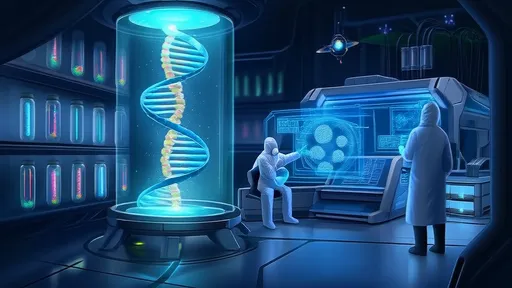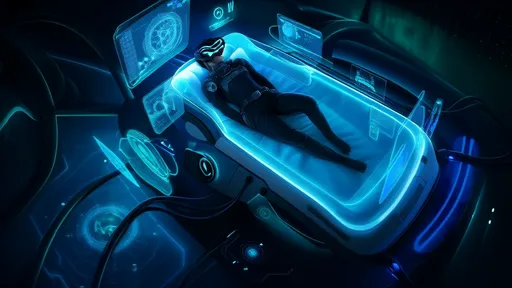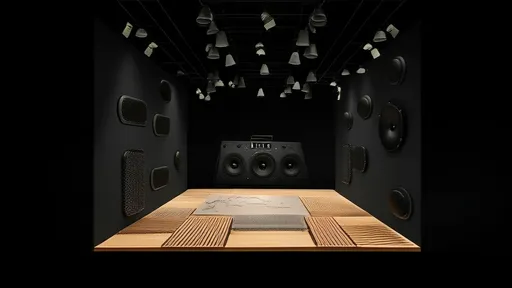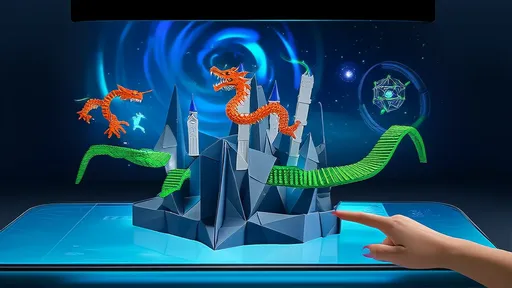The realm of gaming has always pushed technological boundaries, but what if the next frontier isn't in our waking hours? A fascinating new development is emerging at the intersection of neuroscience and entertainment: dream-harvesting games that continue playing while you sleep. This isn't science fiction—it's an ambitious fusion of biometric sensors, machine learning, and narrative design that could redefine how we interact with digital worlds.
How Dream-Play Technology Works
At its core, this technology relies on lightweight EEG headbands or contactless sleep trackers that monitor brainwave patterns, eye movements, and physiological signals. As players drift into different sleep stages, the system detects transitions between light sleep, deep sleep, and REM (when vivid dreaming occurs). Advanced algorithms then trigger subtle audio cues or haptic feedback tailored to the game's narrative—perhaps a distant melody from your RPG's fantasy tavern or the faint vibration of a spaceship's engine in your sci-fi adventure.
What makes this revolutionary is the bidirectional communication. While traditional sleep trackers only collect data, these systems create a feedback loop. The game adapts to your sleep quality—if sensors detect restlessness, it might lower difficulty; during productive REM cycles, it could introduce key story revelations through abstract dream sequences you'll remember upon waking.
The Science Behind Sleep-Learning Mechanics
Researchers have long explored hypnopedia (sleep-learning), with mixed results. Modern dream gaming doesn't attempt language instruction or factual memorization. Instead, it leverages the brain's natural tendency to process emotional experiences and procedural memory during sleep. A 2023 Stanford study showed that players exposed to rhythmic game sounds during specific sleep phases demonstrated 23% better puzzle-solving retention in narrative games compared to control groups.
Game designers collaborate with neuroscientists to create "sleep chapters"—non-interactive but emotionally resonant story beats that unfold when you're least conscious. Imagine battling a nightmare creature in your dreams, only to find your in-game character gained a matching scar overnight. Or waking to discover your sleeping self made moral choices that alter the game world, verified by biometric responses to ethical dilemmas presented during REM.
Ethical Considerations and Privacy
Such intimate technology inevitably raises concerns. Leading developers implement "neuro-ethical design protocols"—all neural data processing occurs locally on devices rather than cloud servers, and players maintain full ownership of their sleep metrics. There's also the philosophical question: if a game progresses based on subconscious decisions, are those truly your choices? Some companies address this by making sleep-influenced outcomes reversible upon waking, preserving player agency.
The potential therapeutic applications add another layer. Early trials with veterans suffering PTSD showed reduced nightmare frequency when games gently reshaped dream narratives. However, the industry faces strict regulations against positioning entertainment products as medical devices without FDA approval.
Player Experiences and Cultural Impact
Beta testers report surreal moments of synchronicity. One player described dreaming of climbing a glass mountain, only to wake finding their character stranded on a crystal cliff—a terrain generated by the game interpreting elevated heart rate and theta waves as anxiety. Another recounted solving a dream logic puzzle that unlocked an in-game achievement, despite having no conscious memory of the solution.
This blurs lines between gaming, augmented reality, and psychoactive storytelling. Critics argue it could lead to unhealthy attachments, while advocates compare it to the natural continuation of oral storytelling traditions where tales unfold across waking and dreaming states. Japanese developers in particular are exploring "yume nikki" (dream diary) mechanics that translate sleep patterns into surreal game landscapes.
The Technical Hurdles Ahead
Current limitations are significant. Consumer-grade sleep tracking remains imperfect, sometimes mistaking light sleep for wakefulness. Audio cues risk actually waking players, and creating meaningful narrative branches that account for wildly variable dream experiences requires massive procedural generation systems. There's also the challenge of making sleep data meaningful—one developer's solution visualizes your sleep architecture as a navigable dream dungeon where restful sleep unlocks healing chambers.
Perhaps the biggest obstacle is the variability of human dreaming. Two people might show identical biometrics while having completely different dream experiences. Some studios address this by focusing on emotional tones rather than literal translations—your nightmare might manifest as a thunderstorm in-game, while someone else's becomes a shadow monster.
Future Possibilities
Looking ahead, we might see integration with other emerging tech. Imagine smart mattresses that use subtle temperature changes to guide dream narratives, or olfactory devices releasing scents tied to game worlds during REM sleep. More ambitiously, some researchers speculate about direct cortical stimulation that could induce lucid dreaming states for fully immersive gameplay—though this remains firmly in speculative territory.
The cultural implications are profound. If successful, dream gaming could create the first entertainment medium that truly continues without conscious attention, turning sleep—traditionally seen as downtime—into an extension of play. It challenges fundamental assumptions about when experiences "count," and whether agency matters more in our conscious or subconscious choices.
As this technology develops, one thing becomes clear: the boundary between games and dreams is growing porous. Whether this represents an exciting new artistic frontier or an overreach into our private mental spaces remains to be seen. But for now, the very notion that our sleeping minds might still be questing, solving, and exploring suggests that play may be more fundamental to human biology than we ever realized.

By /Jul 3, 2025

By /Jul 3, 2025

By /Jul 3, 2025

By /Jul 3, 2025

By /Jul 3, 2025

By /Jul 3, 2025

By /Jul 3, 2025

By /Jul 3, 2025

By /Jul 3, 2025

By /Jul 3, 2025

By /Jul 3, 2025

By /Jul 3, 2025

By /Jul 3, 2025

By /Jul 3, 2025

By /Jul 3, 2025

By /Jul 3, 2025

By /Jul 3, 2025

By /Jul 3, 2025